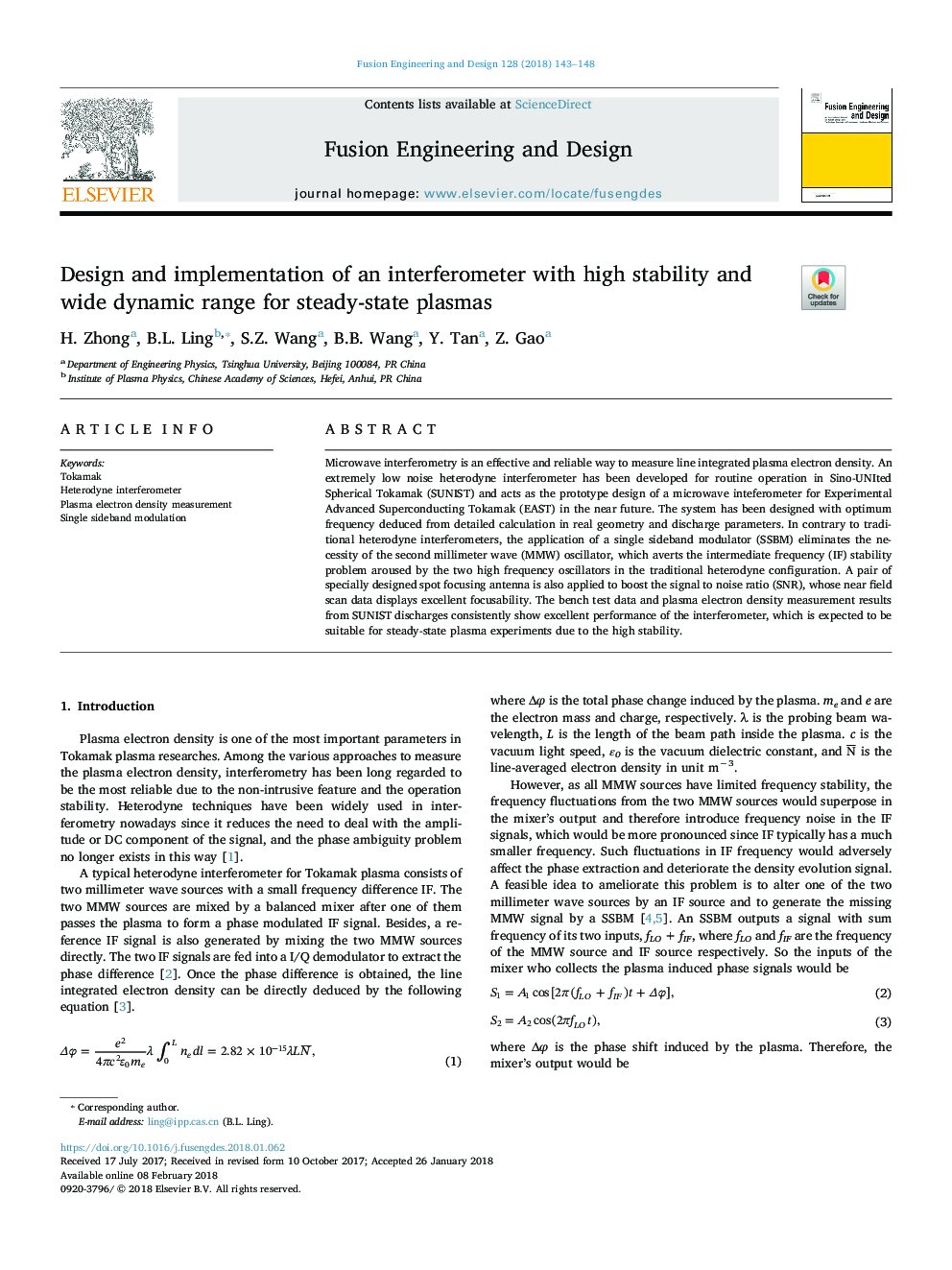| Article ID | Journal | Published Year | Pages | File Type |
|---|---|---|---|---|
| 6743215 | Fusion Engineering and Design | 2018 | 6 Pages |
Abstract
Microwave interferometry is an effective and reliable way to measure line integrated plasma electron density. An extremely low noise heterodyne interferometer has been developed for routine operation in Sino-UNIted Spherical Tokamak (SUNIST) and acts as the prototype design of a microwave inteferometer for Experimental Advanced Superconducting Tokamak (EAST) in the near future. The system has been designed with optimum frequency deduced from detailed calculation in real geometry and discharge parameters. In contrary to traditional heterodyne interferometers, the application of a single sideband modulator (SSBM) eliminates the necessity of the second millimeter wave (MMW) oscillator, which averts the intermediate frequency (IF) stability problem aroused by the two high frequency oscillators in the traditional heterodyne configuration. A pair of specially designed spot focusing antenna is also applied to boost the signal to noise ratio (SNR), whose near field scan data displays excellent focusability. The bench test data and plasma electron density measurement results from SUNIST discharges consistently show excellent performance of the interferometer, which is expected to be suitable for steady-state plasma experiments due to the high stability.
Related Topics
Physical Sciences and Engineering
Energy
Energy Engineering and Power Technology
Authors
H. Zhong, B.L. Ling, S.Z. Wang, B.B. Wang, Y. Tan, Z. Gao,
